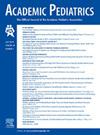儿科患者安全检查表的范围审查。
IF 2.8
3区 医学
Q1 PEDIATRICS
引用次数: 0
摘要
目的:探讨安全检查表在儿科临床护理中的应用及效果。方法:使用Medline进行全面的文献检索,以确定与儿科患者安全清单的制定和/或实施相关的研究。所有的研究设计都被纳入到2023年9月之前发表的引文中。结果:经过摘要和全文筛选,仍有74项研究可供数据提取和分析。儿科外科是使用检查清单的主要场所(n=35),其次是重症监护病房(n=21)和急诊科(n=9)。在74篇被评审的论文中,37篇(50%)设计并开发了清单。与利益相关者共同设计是最常用的设计方法,有25项研究报告了其使用情况。然而,只有2项研究纳入了患者或家长/监护人的意见。在74项研究中,34项(46%)评估了检查表对患者安全结果和护理质量的影响。其中,27项(79%)研究报告了当使用核对表时,事件和不良事件减少,同时护理质量得到改善。六项研究(18%)发现使用检查表对护理质量和安全没有影响,而一项研究(3%)发现检查表对患者预后有负面影响。结论:该综述强调了在各种儿科护理环境中使用检查表。儿科安全检查表是提高护理质量和安全性的宝贵工具。未来的工作需要使用严格的研究设计来发展更多的结论性,概括性。本文章由计算机程序翻译,如有差异,请以英文原文为准。
A Scoping Review of Patient Safety Checklists in Pediatrics
Objective
To examine the utilization and effectiveness of safety checklists in pediatric clinical care.
Methods
A comprehensive literature search was conducted using Medline to identify studies related to the development and/or implementation of patient safety checklists in pediatrics. All study designs were included for citations published through September 2023.
Results
Following abstract and full-text screening, 74 studies remained for data extraction and analysis. Pediatric surgery emerged as the main setting for checklists use (n = 35), followed by Intensive Care Units (n = 21), and Emergency Departments (n = 9). Of the 74 reviewed papers, 37 (50%) designed and developed checklists. The co-design with stakeholders was the most frequently employed design method, with 25 studies reporting its use. However, only two studies included inputs from patients or parents/guardians. Of the 74 studies, 34 (46%) assessed the impact of checklists on patient safety outcomes and quality of care. Among these, 27 (79%) studies reported a reduction in incidents and adverse events, along with an improvement in quality of care when checklists were used. Six studies (18%) found no impact of checklist use on quality and safety of care, while one (3%) found that the checklist negatively impacted patient outcomes.
Conclusion
The review underscores the use of checklists across a wide variety of pediatric care settings. Pediatric safety checklists are valuable tools for improving care quality and safety. Future work needs to be done using rigorous study designs to develop more conclusive, generalizable.
求助全文
通过发布文献求助,成功后即可免费获取论文全文。
去求助
来源期刊

Academic Pediatrics
PEDIATRICS-
CiteScore
4.60
自引率
12.90%
发文量
300
审稿时长
60 days
期刊介绍:
Academic Pediatrics, the official journal of the Academic Pediatric Association, is a peer-reviewed publication whose purpose is to strengthen the research and educational base of academic general pediatrics. The journal provides leadership in pediatric education, research, patient care and advocacy. Content areas include pediatric education, emergency medicine, injury, abuse, behavioral pediatrics, holistic medicine, child health services and health policy,and the environment. The journal provides an active forum for the presentation of pediatric educational research in diverse settings, involving medical students, residents, fellows, and practicing professionals. The journal also emphasizes important research relating to the quality of child health care, health care policy, and the organization of child health services. It also includes systematic reviews of primary care interventions and important methodologic papers to aid research in child health and education.
 求助内容:
求助内容: 应助结果提醒方式:
应助结果提醒方式:


